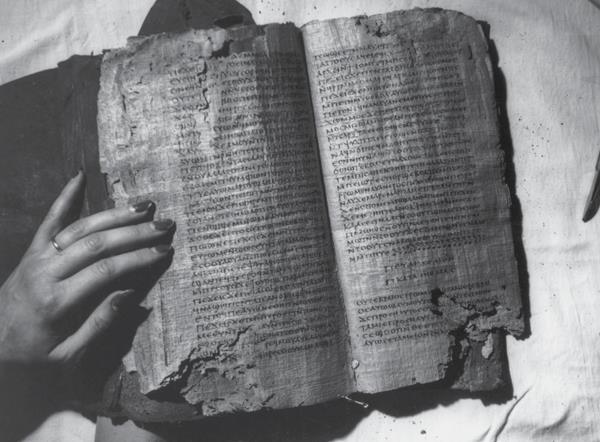Epistles: Text Treasures: Nag Hammadi Codices

The Nag Hammadi Codices are a group of papyrus manuscripts discovered near the city of Nag Hammadi in southern Egypt, about 70 miles north of Luxor. The codices (i.e., bound volumes) contain writings that shed light on the diverse religious and philosophical currents of the early Christian period.
Reportedly, the discovery was made in 1945 by Egyptian farmers digging for fertile soil at the base of the Jabal al-Tarif cliff on the east bank of the Nile River across from Nag Hammadi. The codices were allegedly found buried in a ceramic storage jar. Both the precise location and circumstances in this chance discovery story are questionable, with some scholars suspecting that the manuscripts come from an illicitly excavated grave (or graves). They are now in the Coptic Museum in Cairo.
The collection consists of 12 papyrus volumes and fragments of another one. They contain a total of 52 separate texts, which make up 48 individual titles, as some works appear twice, in different codices. These texts are all written in Coptic Egyptian, though it is generally assumed that they were originally composed in Greek. Although the versions preserved in the Nag Hammadi codices were collected and written down sometime in the mid-fourth century, the original works must have been conceived during the first three centuries of the Christian era.
Already a library member? Log in here.
Institution user? Log in with your IP address.

